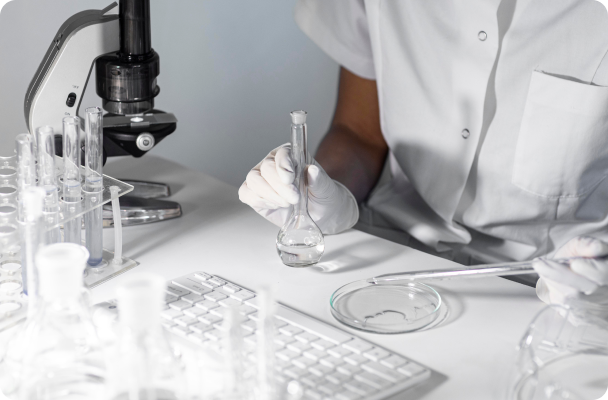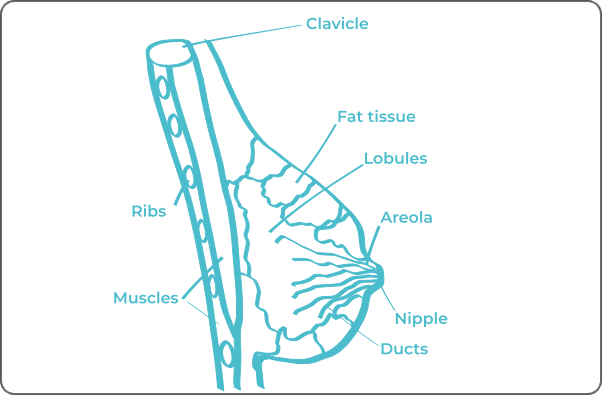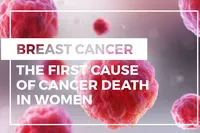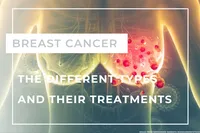Home › Biological sample › Cancer › Breast
Breast cancer biological samples
For Translational Research
Creating drugs and diagnostic tests for the treatment and detection of breast cancer requires conducting studies on various biospecimens collected from breast cancer patients.
A concise summary of the different types of breast cancer and the ways in which Labtoo's services help speed up research and development initiatives in the pharmaceutical sector.


Are you seeking biological specimens from patients diagnosed with breast cancer?
What are breast tumors?
Breast cancer is characterized by a molecular classification based on the presence or absence of specific receptors on tumor cells: estrogen receptors (ER), progesterone receptors (PR), and human epidermal growth factor receptors (HER2).
This classification identifies the four most common types of breast cancers:
Luminal A Cancer
Strong expression of estrogen and progesterone receptors (ER and PR) without HER2 overexpression (HER2-). These tumors are low proliferative and generally of low grade.
Luminal B cancer
Less intense expression of hormonal receptors, with a potential for HER2 overexpression (HER2+). Generally proliferative, they often have a higher grade.
HER2-positive cancer
Presence of HER2 growth factor receptors without estrogen and/or progesterone receptors (ER- and/or PR- and HER2+).
Triple-negative cancer
Lacking all three receptors (ER-, PR-, HER2-), they do not respond to hormone therapies or HER2-targeted therapy.
| Breast Cancer Types | Cellular Origin | Frequency |
| Luminal A Cancer | Epithelial cells of lobules or ducts | ≈ 60- 70 % |
| Luminal B Cancer | Epithelial cells of lobules or ducts | ≈ 10 -15 % |
| Triple-Negative Breast Cancer | Epithelial cells without HER2, ER, PR receptors | ≈ 10 - 15 % |
| HER2+ Breast Cancer | Epithelial cells with HER2 receptor overexpression | ≈ 15 % |
| Inflammatory Breast Carcinoma | Skin cells of lymphatic ducts | Rare |
| Paget's Disease | Epithelial cells of the nipple's skin | Rare |

Most breast cancers originate from lobular cells responsible for milk production (lobular cancer) or ductal cells that transport milk (ductal cancers).
In addition to the site of development, cancers are distinguished based on their stage of progression: when confined to the lobule or duct, it is called carcinoma in situ. In cases of invasion into surrounding tissues, the carcinoma is classified as invasive or infiltrating.
Genetic Mutations Involved in Breast Cancer
Scientific research has identified several genetic mutations associated with an increased risk of breast cancer. These mutations affect genes that play a crucial role in DNA repair and cell regulation. Among the genes most frequently involved are :
- ATM
- BARD1
- BRCA1 et BRCA2
- CHEK2
- CDH1
- NF1
- PALB2
- PTEN
- RAD51C and RAD51D
- STK11
- TP53
These genetic mutations can be hereditary or acquired during life. Genetic testing can detect these anomalies, providing valuable information for assessing risk and adapting prevention or treatment strategies.
Explore Labtoo's Service for Your Biological Sample Research
Labtoo assists you in sourcing biological samples from breast cancer patients. Our team manages the entire project of transferring biological materials from inception to sample delivery.
- Feasibility assessment of sample availability or clinical collection from referenced clinical centers
- Validation of regulatory aspects
- Establishment of a contractual framework
- Dispatch of desired samples under appropriate conditions
- Transfer of associated clinical data
- Additional analytical and experimental services
Types of available clinical samples
Fresh tissues
After a tumor resection or a biopsy, a pathologist can decide whether the tissue sample can be used for research. Labtoo can organize the conditioning and shipment of fresh breast cancer tissue in 24-48 hours after surgery.
Frozen tissues (OCT and FF)
Similarly to fresh tissue, once the tissues are cleared for research, the clinical site can freeze and keep the frozen breast cancer tissue samples at -80°C or in liquid nitrogen for ulterior use.
FFPE Tissues
Pathologists typically embed the biopsies and resections in paraffin. FFPE blocks of breast cancer tissues can be used later for research.
Adjacent Healthy Tissues
Tumor resections typically include healthy adjacent breast tissue during the process. This tissue can later be used for research and act as controls for diseased tissues.
- Plasma or Serum
- PBMC (Peripheral Blood Mononuclear Cells)
- Whole Blood
- Leukapheresis
- Urine
- Feces
- Other
Typical associated clinical data
-
- Age
- Gender
- Ethnicity
- TNM Classification
- Undergone Treatment
- Medical Imaging
- HIV/HBV/HCV status
- Mutations
- Other Data (upon request)

Labtoo identifies clinical sites that can prepare and transfer sample collections tailored to your specific project needs.
Contact our team to discuss your project.
Send your request to our team:
The stages and grades of breast cancer
The stage and grade of cancer are commonly used together to provide a comprehensive assessment of the disease and guide optimal treatment.
The determination of cancer stage is primarily based on the TNM classification, which evaluates the tumor size (T), the involvement of lymph nodes by cancer cells (N), and the presence of metastases in other parts of the body (M).
Concurrently, the grade provides an indication of the degree of differentiation of cancer cells, often ranging from 1 to 3.
Regarding the breast, the stages are represented as follows:
Stage 0
The tumor remains localized within the milk duct. This is referred to as in situ cancer.
Stage I
The tumor measures a maximum of 2 cm, and there is no lymph node involvement.
Stage II
The tumor measures a maximum of 5 cm, with involvement of 1 to 3 axillary lymph nodes or involvement of internal mammary sentinel lymph nodes.
Alternatively, the tumor exceeds 5 cm but has not spread to the lymph nodes.
Stage III
Cancer cells have invaded lymph nodes (axillary, infraclavicular, supraclavicular, internal mammary) or surrounding tissues (muscle of the chest wall, skin).
Stage IV
Cancer has spread to other parts of the body such as the lungs, brain, liver, or bones.
This is referred to as metastatic cancer.

Rare forms of breast cancer
Occasionally, rare forms of breast cancer develop, among which are:
-
Inflammatory Breast Cancer (IBC)
A tumor where cancer cells have spread into the lymphatic vessels of the skin of the breast, ultimately obstructing them.
-
Male Breast Cancer
Similar to female breast cancers and treated in the same manner as in women.
-
Paget's Disease of the Breast
This cancer affects the nipple and areola of the breast. Most women with this type of cancer also have ductal carcinoma.
Breast cancer treatments and advances
The treatment of cancer varies based on its hormone dependence. Generally, surgery is the primary option for this type of cancer, often supplemented with radiotherapy, chemotherapy, or hormone therapy before or after the intervention, depending on the type and stage of the tumor.
Recent advancements have introduced new methods known as "targeted therapies," specifically aiming at molecules present on the tumor. These methods tend to cause fewer side effects than chemotherapy.
A concrete example is the use of trastuzumab, a medication capable of blocking the HER2 protein, thereby hindering the development of cancer cells possessing this particular receptor.




